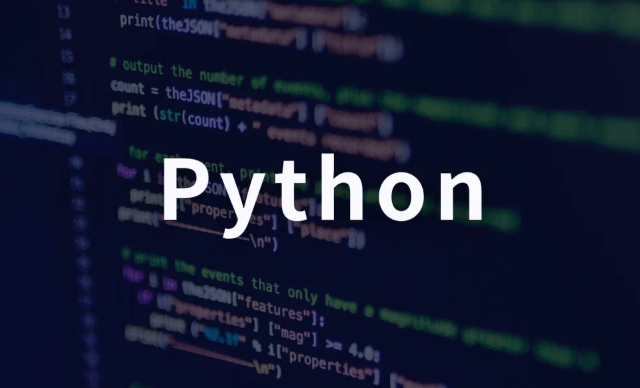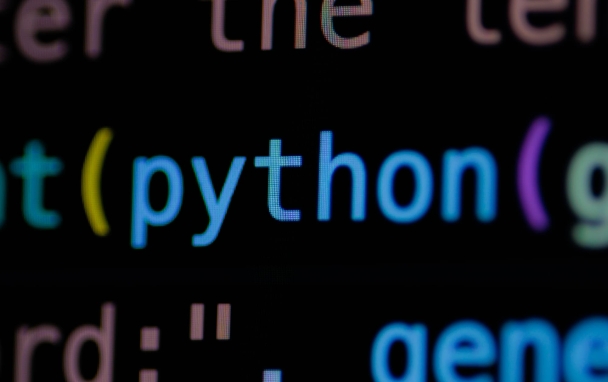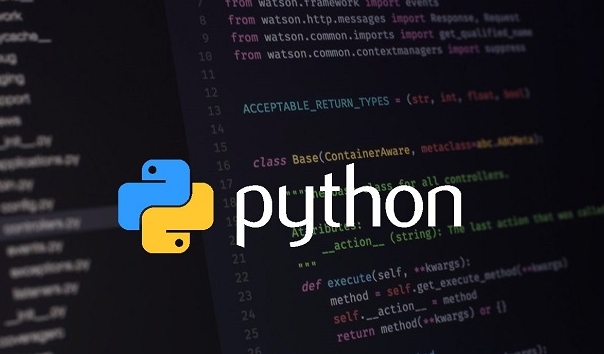There are three main methods for handling queues and message passing in Python: using queue.Queue to achieve inter-thread communication, which is thread-safe. Data is added and obtained by creating queue instances and calling put() and get() methods, and task_done() is required to notify the task to be completed; multiprocessing.Queue is used in multiprocessing scenarios, which supports cross-process communication, and the underlying data is transmitted through pipelines and serialization. It is recommended to use basic or serializable types; third-party libraries such as Celery, ZeroMQ, and RQ extension functions can also be used to meet complex needs, but the deployment and maintenance costs need to be weighed. Master the built-in Queue and select external libraries according to your needs to deal with most scenarios.

Handling queues and messaging in Python is usually to enable communication between multi-threaded, multi-process tasks, or to build a producer-consumer model. The core goal is to enable data exchange between different task modules to be securely exchanged while avoiding problems such as resource competition.

Use queue.Queue to achieve inter-thread communication
queue.Queue in the Python standard library is a thread-safe queue implementation, which is very suitable for messaging in multithreaded environments. It already handles the lock mechanism internally, so you don't need to add an extra lock to pass data between multiple threads safely.

The usage is also very simple:
- Create a queue instance:
q = queue.Queue() - The producer calls
q.put(item)to add data - The consumer calls
q.get()to get data - After processing, you must call
q.task_done()to notify the queue task to complete
For example, you can start multiple consumer threads to get task execution from the same queue. If the queue is empty, get() will block until a new task arrives.

It should be noted that by default, Queue is first-in-first-out (FIFO), but you can also use LifoQueue to implement last-in-first-out, or PriorityQueue to sort by priority.
Use multiprocessing.Queue in multiprocessing scenarios
When you need to pass messages between multiple processes, you can no longer use queue.Queue because normal queues cannot be shared across processes. At this time, multiprocessing.Queue should be used, which is specially designed for multiprocessing.
It is used in a similar way to the standard Queue:
- Import and create:
from multiprocessing import Queue; q = Queue() - Communication is achieved by sharing this queue object between processes
- Also supports
put()andget()methods
However, it should be noted that the underlying implementation of multiprocessing.Queue is used to transmit data through pipelines and serialization, so there are certain restrictions on the data types placed. It is recommended to use basic types or serializable objects.
Extend functionality using third-party library
If you need more advanced message queueing functions, such as persistence, broadcasting, delay queueing, etc., you can consider using a third-party library, such as:
- Celery : Suitable for distributed task scheduling, combined with RabbitMQ or Redis as broker
- ZeroMQ : Provides flexible messaging modes suitable for network communication and microservice architectures
- Redis Queue (RQ) : A lightweight task queue that relies on Redis to store task information
These tools can help you achieve reliable messaging mechanisms in complex systems, but also increase deployment and maintenance costs. Before making a choice, you should make trade-offs based on the project size and needs.
Basically that's it. Mastering the built-in Queue type and then deciding whether to introduce external libraries according to actual needs, you can deal with most messaging scenarios.
The above is the detailed content of Working with Queues and Message Passing in Python. For more information, please follow other related articles on the PHP Chinese website!

Hot AI Tools

Undress AI Tool
Undress images for free

Undresser.AI Undress
AI-powered app for creating realistic nude photos

AI Clothes Remover
Online AI tool for removing clothes from photos.

Clothoff.io
AI clothes remover

Video Face Swap
Swap faces in any video effortlessly with our completely free AI face swap tool!

Hot Article

Hot Tools

Notepad++7.3.1
Easy-to-use and free code editor

SublimeText3 Chinese version
Chinese version, very easy to use

Zend Studio 13.0.1
Powerful PHP integrated development environment

Dreamweaver CS6
Visual web development tools

SublimeText3 Mac version
God-level code editing software (SublimeText3)

Hot Topics
 How does Python's unittest or pytest framework facilitate automated testing?
Jun 19, 2025 am 01:10 AM
How does Python's unittest or pytest framework facilitate automated testing?
Jun 19, 2025 am 01:10 AM
Python's unittest and pytest are two widely used testing frameworks that simplify the writing, organizing and running of automated tests. 1. Both support automatic discovery of test cases and provide a clear test structure: unittest defines tests by inheriting the TestCase class and starting with test\_; pytest is more concise, just need a function starting with test\_. 2. They all have built-in assertion support: unittest provides assertEqual, assertTrue and other methods, while pytest uses an enhanced assert statement to automatically display the failure details. 3. All have mechanisms for handling test preparation and cleaning: un
 How can Python be used for data analysis and manipulation with libraries like NumPy and Pandas?
Jun 19, 2025 am 01:04 AM
How can Python be used for data analysis and manipulation with libraries like NumPy and Pandas?
Jun 19, 2025 am 01:04 AM
PythonisidealfordataanalysisduetoNumPyandPandas.1)NumPyexcelsatnumericalcomputationswithfast,multi-dimensionalarraysandvectorizedoperationslikenp.sqrt().2)PandashandlesstructureddatawithSeriesandDataFrames,supportingtaskslikeloading,cleaning,filterin
 What are dynamic programming techniques, and how do I use them in Python?
Jun 20, 2025 am 12:57 AM
What are dynamic programming techniques, and how do I use them in Python?
Jun 20, 2025 am 12:57 AM
Dynamic programming (DP) optimizes the solution process by breaking down complex problems into simpler subproblems and storing their results to avoid repeated calculations. There are two main methods: 1. Top-down (memorization): recursively decompose the problem and use cache to store intermediate results; 2. Bottom-up (table): Iteratively build solutions from the basic situation. Suitable for scenarios where maximum/minimum values, optimal solutions or overlapping subproblems are required, such as Fibonacci sequences, backpacking problems, etc. In Python, it can be implemented through decorators or arrays, and attention should be paid to identifying recursive relationships, defining the benchmark situation, and optimizing the complexity of space.
 How can you implement custom iterators in Python using __iter__ and __next__?
Jun 19, 2025 am 01:12 AM
How can you implement custom iterators in Python using __iter__ and __next__?
Jun 19, 2025 am 01:12 AM
To implement a custom iterator, you need to define the __iter__ and __next__ methods in the class. ① The __iter__ method returns the iterator object itself, usually self, to be compatible with iterative environments such as for loops; ② The __next__ method controls the value of each iteration, returns the next element in the sequence, and when there are no more items, StopIteration exception should be thrown; ③ The status must be tracked correctly and the termination conditions must be set to avoid infinite loops; ④ Complex logic such as file line filtering, and pay attention to resource cleaning and memory management; ⑤ For simple logic, you can consider using the generator function yield instead, but you need to choose a suitable method based on the specific scenario.
 What are the emerging trends or future directions in the Python programming language and its ecosystem?
Jun 19, 2025 am 01:09 AM
What are the emerging trends or future directions in the Python programming language and its ecosystem?
Jun 19, 2025 am 01:09 AM
Future trends in Python include performance optimization, stronger type prompts, the rise of alternative runtimes, and the continued growth of the AI/ML field. First, CPython continues to optimize, improving performance through faster startup time, function call optimization and proposed integer operations; second, type prompts are deeply integrated into languages ??and toolchains to enhance code security and development experience; third, alternative runtimes such as PyScript and Nuitka provide new functions and performance advantages; finally, the fields of AI and data science continue to expand, and emerging libraries promote more efficient development and integration. These trends indicate that Python is constantly adapting to technological changes and maintaining its leading position.
 How do I perform network programming in Python using sockets?
Jun 20, 2025 am 12:56 AM
How do I perform network programming in Python using sockets?
Jun 20, 2025 am 12:56 AM
Python's socket module is the basis of network programming, providing low-level network communication functions, suitable for building client and server applications. To set up a basic TCP server, you need to use socket.socket() to create objects, bind addresses and ports, call .listen() to listen for connections, and accept client connections through .accept(). To build a TCP client, you need to create a socket object and call .connect() to connect to the server, then use .sendall() to send data and .recv() to receive responses. To handle multiple clients, you can use 1. Threads: start a new thread every time you connect; 2. Asynchronous I/O: For example, the asyncio library can achieve non-blocking communication. Things to note
 Polymorphism in python classes
Jul 05, 2025 am 02:58 AM
Polymorphism in python classes
Jul 05, 2025 am 02:58 AM
Polymorphism is a core concept in Python object-oriented programming, referring to "one interface, multiple implementations", allowing for unified processing of different types of objects. 1. Polymorphism is implemented through method rewriting. Subclasses can redefine parent class methods. For example, the spoke() method of Animal class has different implementations in Dog and Cat subclasses. 2. The practical uses of polymorphism include simplifying the code structure and enhancing scalability, such as calling the draw() method uniformly in the graphical drawing program, or handling the common behavior of different characters in game development. 3. Python implementation polymorphism needs to satisfy: the parent class defines a method, and the child class overrides the method, but does not require inheritance of the same parent class. As long as the object implements the same method, this is called the "duck type". 4. Things to note include the maintenance
 How do I slice a list in Python?
Jun 20, 2025 am 12:51 AM
How do I slice a list in Python?
Jun 20, 2025 am 12:51 AM
The core answer to Python list slicing is to master the [start:end:step] syntax and understand its behavior. 1. The basic format of list slicing is list[start:end:step], where start is the starting index (included), end is the end index (not included), and step is the step size; 2. Omit start by default start from 0, omit end by default to the end, omit step by default to 1; 3. Use my_list[:n] to get the first n items, and use my_list[-n:] to get the last n items; 4. Use step to skip elements, such as my_list[::2] to get even digits, and negative step values ??can invert the list; 5. Common misunderstandings include the end index not






